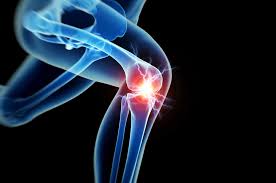Introduction:
Joint replacement surgery has revolutionized the treatment of debilitating joint conditions, offering hope and restored mobility to millions of people worldwide. Joint replacement surgeons are specialists trained in a variety of surgical techniques aimed at replacing damaged or diseased joints with artificial implants. In this guide, we'll explore the different types of joint replacement surgeries performed by these skilled professionals and the conditions they address.
1. Total Hip Replacement:
Total hip replacement surgery, also known as total hip arthroplasty, is a procedure designed to replace the damaged or diseased hip joint with an artificial implant. This surgery is commonly performed to treat conditions such as osteoarthritis, rheumatoid arthritis, avascular necrosis, or hip fractures. During the procedure, the damaged hip joint's ball-and-socket structure is removed and replaced with prosthetic components made of metal, plastic, or ceramic materials.
2. Total Knee Replacement:
Total knee replacement surgery, or total knee arthroplasty, is a surgical intervention aimed at replacing the damaged surfaces of the knee joint with artificial implants. It is typically recommended for individuals with severe knee arthritis, rheumatoid arthritis, or traumatic knee injuries that have not responded to conservative treatments. During the procedure, the surgeon removes damaged bone and cartilage from the knee joint and replaces them with metal and plastic components, restoring smooth joint movement and reducing pain.
3. Partial Knee Replacement:
Partial knee replacement, also known as unicompartmental knee replacement, is a surgical option for individuals with isolated damage to one compartment of the knee joint, typically the medial or lateral compartment. Unlike total knee replacement, which involves replacing the entire knee joint, partial knee replacement preserves healthy bone and ligaments in the unaffected portions of the knee. This minimally invasive procedure offers faster recovery and preserves more natural knee function compared to total knee replacement in suitable candidates.
4. Total Shoulder Replacement:
Total shoulder replacement surgery, or total shoulder arthroplasty, is indicated for individuals with severe shoulder arthritis, rotator cuff tears, or other conditions causing debilitating shoulder pain and dysfunction. During the procedure, the damaged humeral head and glenoid socket are replaced with artificial components, restoring smooth shoulder movement and alleviating pain. Total shoulder replacement can significantly improve shoulder function and quality of life for patients with advanced shoulder pathology.
5. Reverse Shoulder Replacement:
Reverse shoulder replacement is a specialized procedure designed for individuals with certain types of shoulder arthritis combined with massive rotator cuff tears or irreparable rotator cuff damage. Unlike traditional total shoulder replacement, which relies on intact rotator cuff muscles for stability, reverse shoulder replacement reverses the ball-and-socket relationship of the shoulder joint, allowing alternative muscles to compensate for the loss of rotator cuff function. This innovative approach provides pain relief and improved shoulder function in select patient populations.
Conclusion:
Joint replacement surgeons are skilled practitioners proficient in a range of surgical techniques aimed at addressing various joint conditions and restoring function and mobility. Whether it's a total hip replacement, total knee replacement, partial knee replacement, total shoulder replacement, or reverse shoulder replacement, these procedures offer hope and renewed quality of life for individuals suffering from debilitating joint pain and dysfunction. If you're considering joint replacement surgery, consulting with a qualified joint replacement surgeon is the first step toward regaining your freedom of movement and enjoying life to the fullest.






Comments